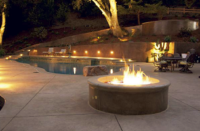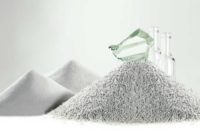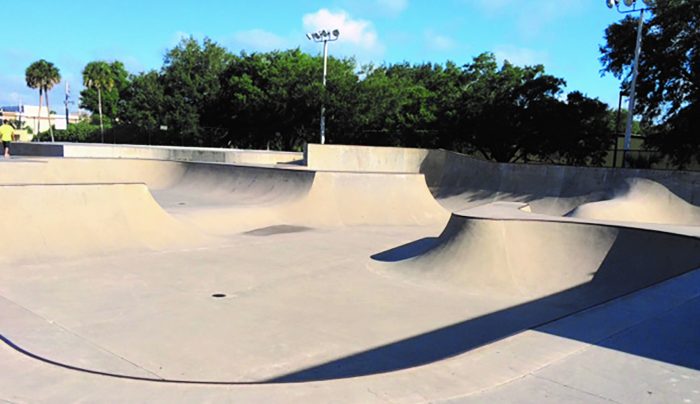
Photos courtesy of CTS Cement Manufacturing Corp.
Sustainability in concrete is a driving force in today’s built environment. To guide and organize the efforts, a robust collection of initiatives include the LEED program, the International Green Code Council and the Cement Sustainability Initiative, to name a few.
Their goal is to improve ecological stewardship practices and minimize climate impact by managing CO2 emissions. They also aim to reduce airborne pollutants generated by construction to improve health and safety, and achieve carbon-neutral designs. All with a shared commitment to building a safer, more sustainable built environment.
To achieve these objectives, designs must use materials that improve durability, and reduce material use and waste. Designs should also maximize service life, and minimize in-service repair and maintenance costs. Evaluating materials must shift from line-item costs to a more holistic, integrated approach. It should focus on project impact, improved efficiencies and overall value achieved in design, construction and in-service.
Type K shrinkage-compensating cement addresses many sustainability objectives. It has a proven track record of performance in all types of concrete construction. This includes industrial slabs-on-grade, post-tension designs, bridge decks and pavements.
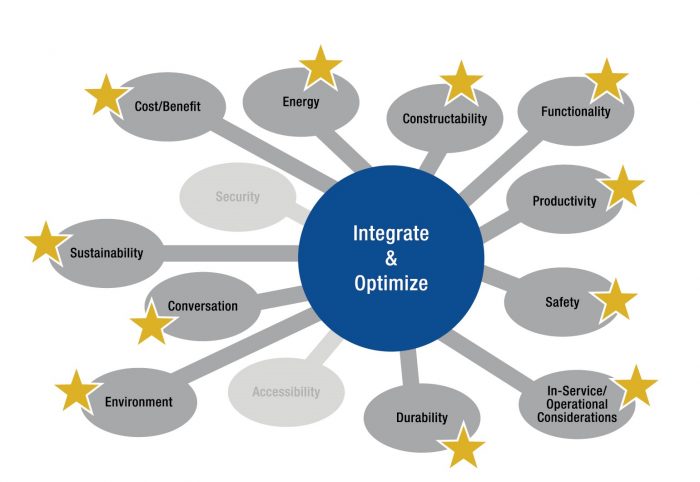
Cradle to grave
From cradle to grave, Type K shrinkage-compensating cement makes a difference. Manufacturers use fewer natural resources to make it compared to traditional portland cement. Lower CO2 emissions are generated, and less energy is consumed during the manufacturing process.
During construction, it improves health and safety by reducing airborne pollutants. Type K cement concrete offers an unmatched opportunity to extend construction joints up to 150+ feet. It does this without the need for saw cuts in slabs and walls. This effectively eliminates respiratory silica dust during construction. It also reduces joint treatment materials and labor associated with joint installation.
By improving dimensional stability and durability, repairing and replacing concrete during construction can be prevented. You can also eliminate safety concerns related to slab curling, spalling and cracked panel edges.
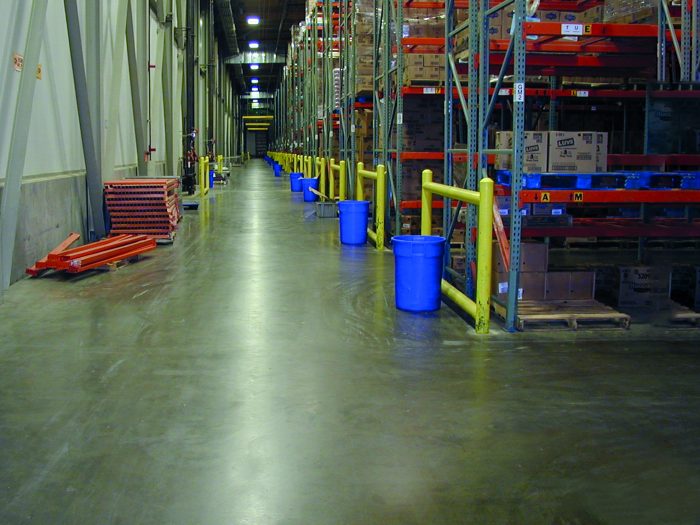
The advanced hydration mechanism of this calcium sulfoaluminate (CSA) cement-based chemistry drives Type K cement’s improved durability. It consumes mix water more efficiently to create a denser, less permeable concrete that overcomes drying shrinkage and provides long-term dimensional stability. The designed expansion in a Type K concrete mix effectively compensates for anticipated volume change. By eliminating bleed water, abrasion resistance can improve up to 60% without using a densifier or surface hardener.
Many characteristics to like
By improving the quality of the cement paste within the concrete, materials often used with standard portland cement concrete to enhance durability and performance can be eliminated. Supplementary cementitious materials can be optimized, placement thickness can often be reduced, temperature and shrinkage steel requirements can be minimized, and pour strips/closure strips can be eliminated. These advantages not only improve quality, but can also improve project efficiencies, impact cost savings for overall material use and reduce construction waste.
By minimizing creep and moment in post-tension designs and reducing long-term relaxation of stress in steel tendons by up to 75%, other costly, time-consuming engineering and construction measures can be eliminated. Floor flatness and floor levelness (FF/FL) are maintained as placed, dominant joints are prevented, and costly repairs that consume time, energy and materials — like slab-jacking, grinding and leveling — can be eliminated.
For slabs that require seamless flooring systems or tile finishes, material and labor savings can be achieved by minimizing or eliminating the slab’s joints prior to installing the flooring system. Reducing the lineal feet of joints that must be treated reduces the overall cost per lineal foot and the time and material consumed on the project.
For containment structures, maximizing placement sizes means minimizing water stops, formwork and mobilizations without sacrificing performance. This translates directly into time, material and cost savings during construction. Optimum in-service performance minimizes repair and maintenance costs, as well as overall life-cycle costs.

And, for decorative concrete applications, you can achieve superior performance and sustainability without sacrificing aesthetics. Consequently, you can integrally color, stamp, stain or otherwise enhance Type K concrete to meet design requirements.
There’s a lot to like about Type K cement.
How does it work?
Type K cement is a blended cement that incorporates an expansive cementitious additive, marketed as Komponent. When you incorporate Komponent into a portland cement mix at proper proportions, you get Type K shrinkage-compensating concrete. You must tailor the mix to achieve the amount of shrinkage compensation required based on the characteristic of the regional raw materials and admixtures used.
As the additive hydrates, ettringite crystals form that efficiently consume mix water and make the concrete expand, resulting in denser, less permeable concrete. It also eliminates bleed water, which contributes to increased abrasion resistance (up to 60% greater than portland cement concrete) and prevents curled panel edges.
The expansion needed to achieve full shrinkage-compensation is achieved with a well-proportioned concrete mix design. Use this in conjunction with a minimum 0.15% reinforcement, or the amount of reinforcement necessary to achieve design requirements.
To verify the most effective dosage of the Komponent additive, use ASTM C878 – “Standard Test Method for Expansive Hydraulic Cement.” ACI 223 – “Guide for the Use of Shrinkage-Compensating Concrete” provides design guidelines that include reinforcement considerations for all types of structures including pavement, containment, post-tension designs and floor slabs.
Three key parameters control expansion:
- Proper dosage verified by ASTM C878 testing.
- Exhaustion of the chemical reaction during hydration.
- The amount of restraint.
With the fundamentals of good concrete practice applied, attention to proper detailing and proper wet curing, a successful Type K shrinkage-compensating concrete installment can be achieved on every project.
You can achieve batching and mixing the same way you would incorporate fly ash or other supplementary cementitious materials (SCMs). You can adjust slump and air based on performance requirements, just as you would with a traditional portland cement mix design. If equipment limitations prevent bulk batching, you can adapt alternative methods to suit the project and ensure efficient production.
Maximizing sustainability in concrete
Ultimately, by improving the quality of the cement paste with Type K cement, you can eliminate a host of other materials used to overcome the challenges of traditional concrete design and improve durability. This reduces the overall material use and waste, total energy consumption and CO2 emissions from project-to-project.
You can improve construction project efficiencies by maximizing placement sizes and simplifying reinforcement requirements, eliminating saw cutting, minimizing joint treatment and eliminating bleed water. You can also minimize life-cycle costs and maximize operational efficiencies with proven “best-in-class” performance.
Type K shrinkage-compensating cement offers an opportunity to impact sustainability in every industry, including commercial and industrial, institutional and aviation, and marine and infrastructure. So, the next time you’re evaluating materials to maximize sustainability without sacrificing performance, take a holistic evaluation approach. Consider Type K shrinkage-compensating cement concrete, assess the cost and overall project savings.

Type K cement helps achieve dramatic results
The Dallas Municipal Center’s dramatic sloping façade is a monolith of 60,000 cubic yards of buff-colored Type K shrinkage-compensating cement concrete created with Komponent cement technology. It reaches out 70 feet over the plaza to draw the public into its shelter.
Komponent technology helped minimize cracking in the exposed cast-in-place concrete. The giant load-bearing brackets were post-tensioned both vertically and horizontally. Komponent technology allowed the structural engineer to minimize the amount of reinforcing steel required for shortening due to concrete shrinkage.
The integral color minimized material usage on the façade. In addition, the contractor was able to cast large individual portions of exposed concrete, up to 70 feet long by 14 feet high. This helps to improve both project efficiencies and completion time.
